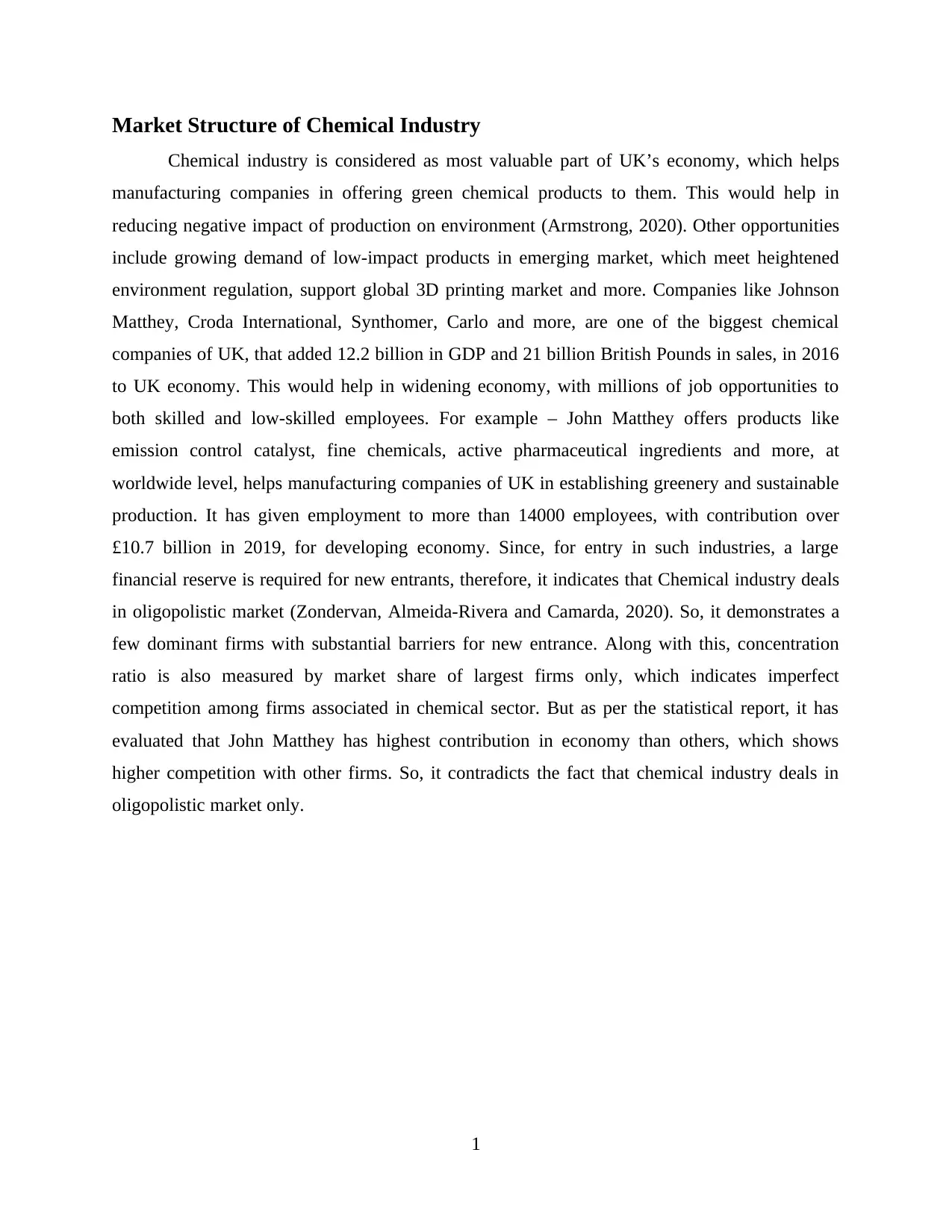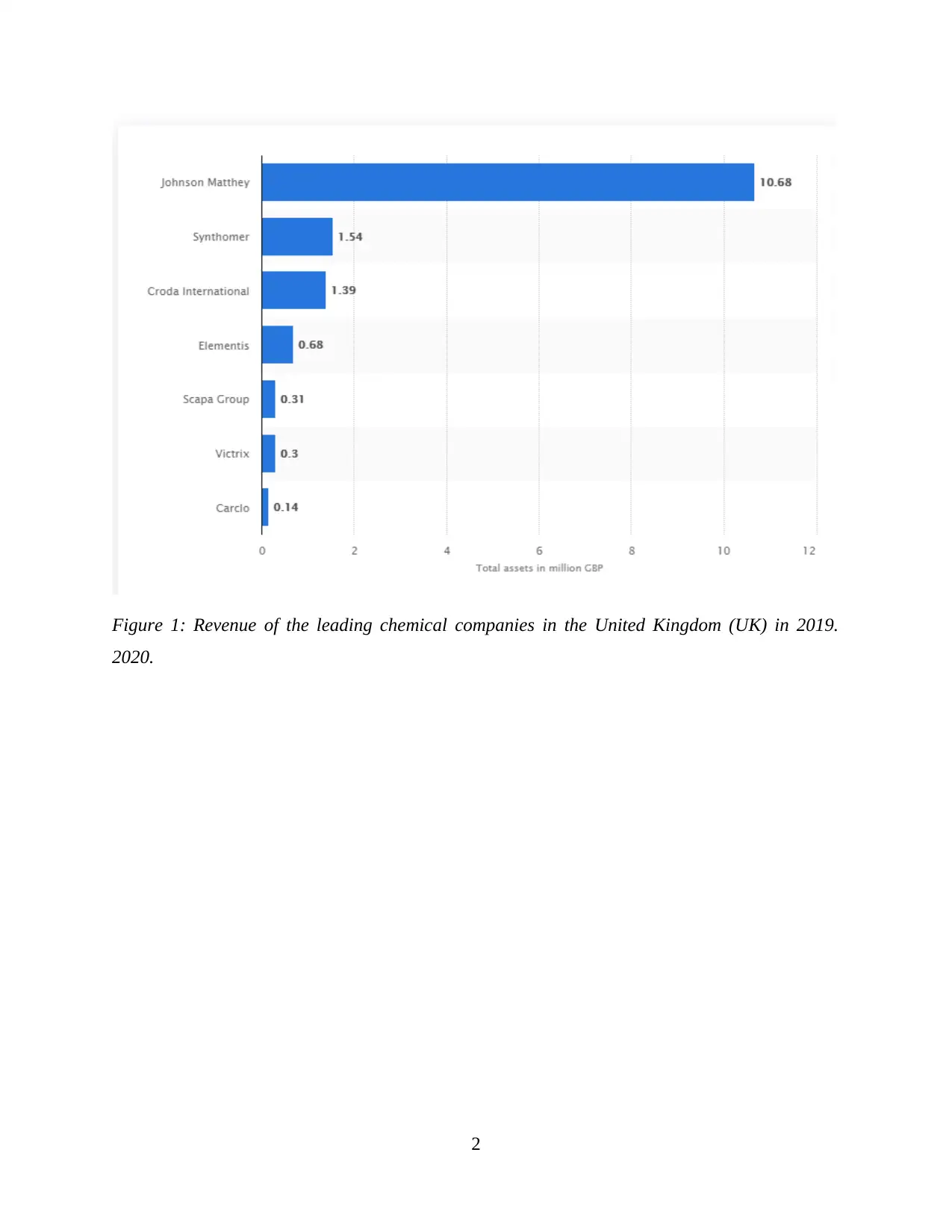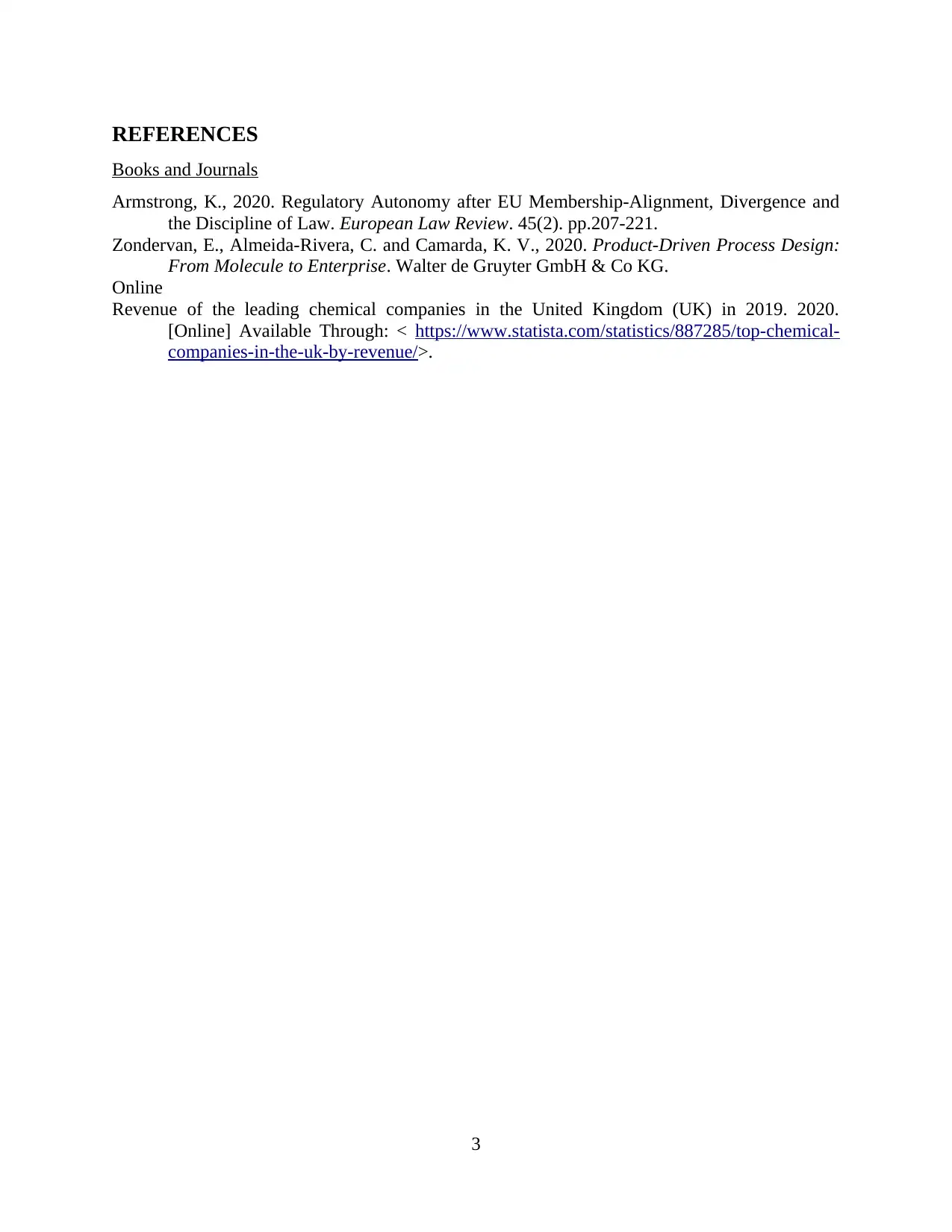Economic Principles: Analysis of Chemical Industry Market Structure
VerifiedAdded on 2023/01/11
|5
|444
|31
Report
AI Summary
This report analyzes the market structure of the chemical industry, focusing on the UK market and key firms like John Matthey. The assignment examines the appropriateness of the oligopoly model, considering factors such as the nature of the product, economies of scale, the number of competitors, and market power. It discusses how the chemical industry presents characteristics of an oligopolistic market due to the high financial barriers to entry. The report also highlights the competition among firms, using the revenue of top chemical companies to illustrate the dynamics within the sector. Ultimately, the report examines the fit between the real-world market and the theoretical economic models, evaluating aspects that align and diverge from the oligopoly framework.
1 out of 5












![[object Object]](/_next/static/media/star-bottom.7253800d.svg)